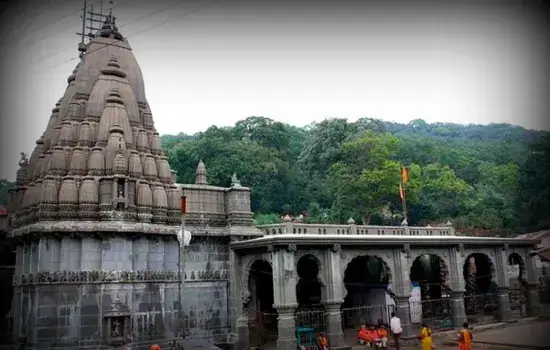Bhimashankar Temple, one of the twelve sacred Jyotirlingas in India, is located in the Sahyadri Hills of Maharashtra. Known for its spiritual significance and natural beauty, this temple attracts pilgrims and tourists throughout the year. However, to make the most of your visit, it’s important to choose the right time based on weather conditions and temple activities.

Bhimashankar Temple in Winter (October to February)
The winter months, from October to February, are considered the best time to visit Bhimashankar Temple. During this period, the weather is cool and pleasant, with temperatures ranging from 10°C to 25°C, making it comfortable for pilgrims to explore the temple and its surroundings. The cool climate also adds to the serene ambiance, enhancing the overall spiritual experience. Winter is also a great time for trekking in the nearby Bhimashankar Wildlife Sanctuary, which is home to the rare Indian Giant Squirrel and various other species of flora and fauna.
Bhimashankar Temple in Monsoon (June to September)
The monsoon season, from June to September, brings heavy rainfall to the region, which can make travel a bit challenging due to slippery roads and occasional landslides. However, the monsoon also transforms the Sahyadri Hills into a lush green paradise, with numerous waterfalls and streams springing to life. This season offers a unique experience for nature lovers who enjoy the beauty of rain-soaked landscapes and the fresh, rejuvenating atmosphere. If you decide to visit during the monsoon, it’s important to be prepared for wet conditions and potential delays due to weather.
Bhimashankar Temple in Summer (March to May)
Summer in Bhimashankar, from March to May, can be quite warm, with temperatures ranging from 20°C to 35°C. The afternoons can get hot, making it less ideal for outdoor activities. However, early mornings and evenings remain relatively pleasant, allowing for comfortable temple visits and short hikes. Despite the heat, the summer season sees fewer crowds, which can be an advantage for those seeking a more peaceful and less crowded pilgrimage experience.
Special Occasions and Festivals
Bhimashankar Temple is especially vibrant during major Hindu festivals like Mahashivaratri, which usually falls in February or March. This festival sees the temple beautifully decorated and filled with devotees participating in special rituals and prayers. Visiting during these festive times can offer a deeply spiritual experience, but it’s important to be prepared for large crowds.
Conclusion
Overall, the best time to visit Bhimashankar Temple is during the winter months of October to February when the weather is most comfortable for exploring both the temple and the surrounding natural beauty. Whether you’re visiting for a spiritual journey or to enjoy the scenic landscapes, choosing the right season can greatly enhance your experience at this revered Jyotirlinga site.